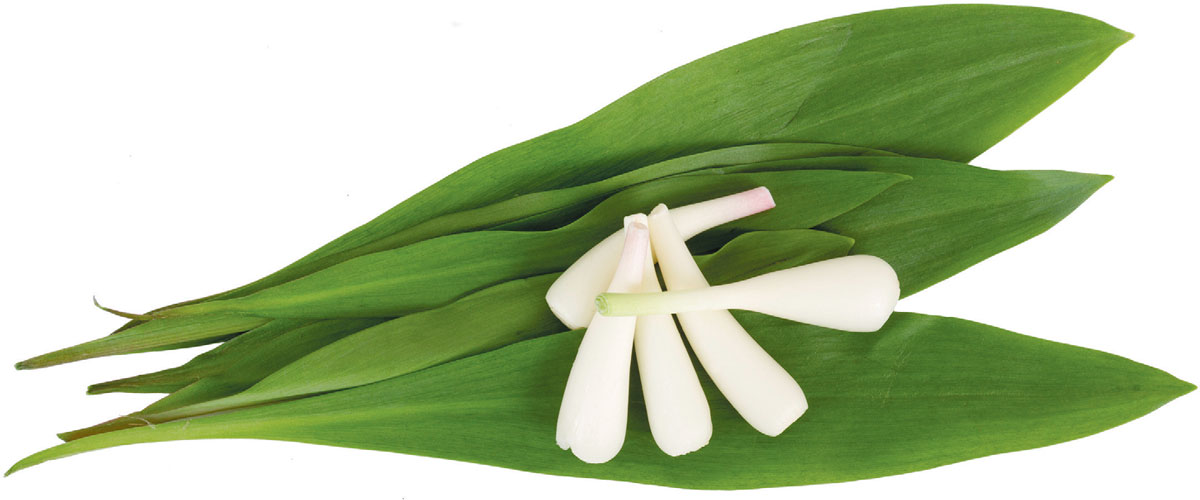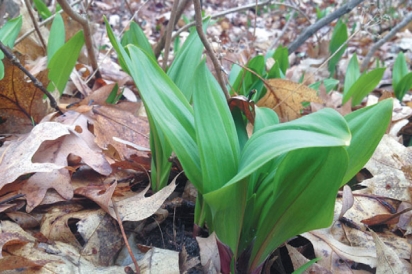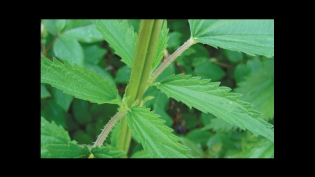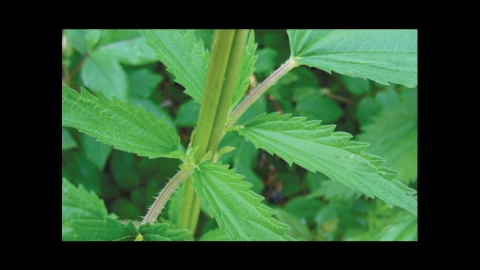“Rampant” Over-Harvesting
Wild leeks, a.k.a. ramps, have become a desirable wild staple popular on restaurant menus and in greenmarkets, but careless and “rampant” gathering threatens future harvests.
An early spring ephemeral, the wild leek (Allium tricoccum) is an aromatic, delicious wild onion. The bulb sweetens when roasted, pickles well for martinis and has tops that are delicious as garnish or incorporated into a spring salad.
The wild leek has been the forager’s darling for over a decade, showing up on menus and in farmers’ markets. This increase in popularity is putting pressure on the wild leek population along the East Coast and has the potential to do so in the Midwest.
While they may seem to virtually carpet the floor of the woods in the spring, there is growing concern over the volumes harvested for the restaurant market and by hobby foragers. Wild leek populations are now being monitored across Canada and into New York by conservation associations and the pressure is even being felt here in the Great Lakes.
“Too many people are over-harvesting wild leeks in the parks,” says Michigan forager Jason Googins. “It is illegal to remove plants without permission, plus too many [foragers] do not pull up the plant correctly and leave a ton of leaves around. It is sad.”
Foragers like Googins are finding that the stands of leeks are slowly disappearing downstate, in areas of western Michigan from Grand Rapids to the lakeshore. This is putting pressure on commercial foragers to head north toward Leelanau County to gather their harvests. And there is a good reward for bringing in a haul of wild leeks.
Chefs and farmers’ markets shoppers are paying foragers top dollar for the leeks—upwards of $15 per pound in more affluent markets and restaurants. It is very tempting for some to take advantage of the market demand and look past harvesting the leeks sustainably.
Unless we take some pressure off of the wild leek population in our area we will over-harvest them.
This is more than a forager’s issue—the situation is due in part to the love of this edible plant by the farm-to-table and locavore community, and we eaters must be concerned about potential over-harvesting. If you come across the wild leeks in the farmers’ market or in the restaurants, inquire about the source of the wild leeks.
Georgia Gietzen, owner of Northwoods Hardware in Glen Arbor, has a long history working in the food business and learned how to harvest and grow wild leeks from Timothy Young, owner of Food for Thought, a local and sustainable food company based in Honor.
“There’s real interest in culinary circles in wild edibles,” says Gietzen when asked about foraging. As for leeks, “Most of us in food circles understand the importance of sustainable harvesting of the wild leeks.”
“I learned from Tim the importance of not ‘decimating’ the leek patches,” Gietzen says.
“Each spring when Food for Thought harvests, they rotate quadrants so each section has an opportunity to grow back, and they don’t clean out a whole bed,” says Gietzen. “And they always leave growth in the ground in each of the leek clusters.”
HELP GROW THE WILD ONES
To ensure a small harvest each year, cultivate your own stands of wild leeks out in the wild. A new stand can easily be grown from a few bulbs of the wild leek. Transplanting bulbs of wild leeks within the wild can help expand stands of the plant.
Local growers are also beginning to propagate the wild leeks for private forest gardens, making this a sustainable option for the forager wishing to purchase bulbs to plant. The bulbs transplant well into a woodland garden of beech/maple hardwoods with sandy, well-drained soil.
Transplant the bulbs in the spring, roots facing down. The plant will root and regrow the following summer. Let it become established and go to seed for a few seasons, and it will expand into a nice, lush stand of wild leeks over several years.
You can also use seeds to grow your own woodland garden of wild leeks. The wild leek sends up a flower stalk with a white flower cluster that bears small, round black seeds, about ⅛ inch in size. Gather the seeds in midsummer and scatter them where you want to establish new patches.
Leek leaves can be cut off above the ground and enjoyed in many different recipes. A sizable, mature bulb that is ready for harvest will be 3 years old or older. The bulbs can be easily dug with a garden fork, but only harvest full plants in moderation. This will ensure that your wild leek source will live on so you can keep making those delicious pickled cocktail onions and your patches of leeks will also be enjoyed by future generations.
As for Jason Googins’ final advice to foragers?
“Please go after garlic mustard,” he suggests. “It is so destructive to the native plants including wild leeks.” And it’s so very edible.
Don’t Dig Too Deep
Did you know that it takes about three years for a seed to develop into a mature leek that is ready for harvest?
It takes about 18 months for a ramp seed to germinate, and another two years for that seed to grow into a small bulb that sprouts two broad, smooth leaves of about six to eight inches in length and two to three inches across.
Many leeks are harvested prematurely, when they are very small, and also it’s common for foragers to not help regenerate the stands from which they are harvesting.
Do more to help the wild leek population: If you see wild leeks for sale in the marketplace, especially large quantities, inquire as to the forager’s sourcing and practices in gathering the wild leeks. If you see leeks on a menu at a restaurant, ask about the restaurant’s commitment to sustainability practices.
And if you are the forager, take time to learn for yourself the distribution of leeks in your area. Then find a sizable stand and clip the tops only. This is the most sustainable way to use the plant.
Report Poachers: If you witness removal of plant material on national park land it should be reported. It is poaching and it is deemed illegal. It is our responsibility to ensure a foraging ethic as part of our local food system.








